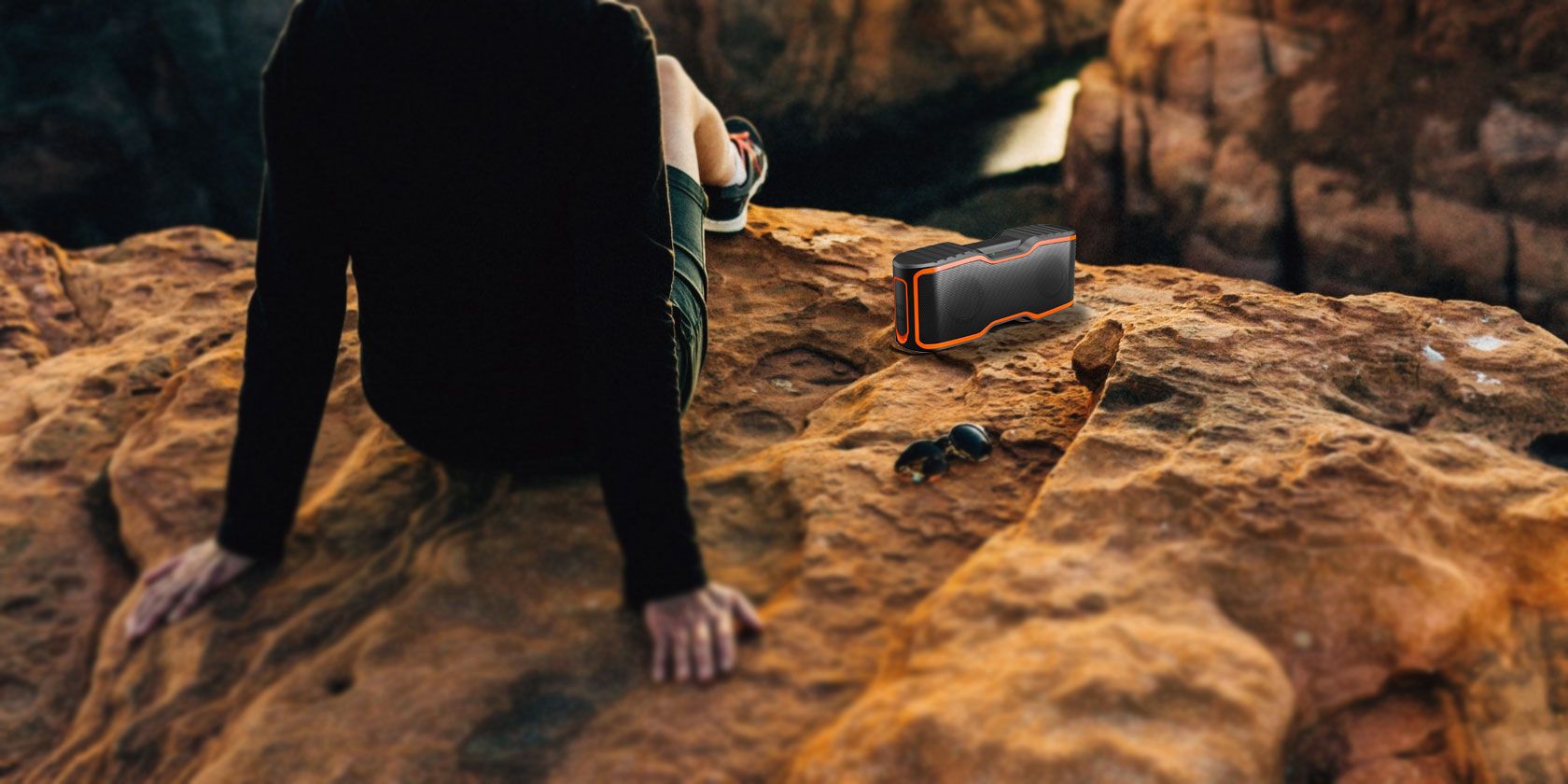There are lots of times you might need to get hold of royalty-free, Creative Commons music. You could be putting together a short film, designing a video game, or recording a podcast; with the right license, you can use CC music for all of that.
You can find plenty of free music across the sites in this list, whether you plan to share it, remix it, or use it commercially. When it comes to Creative Commons music, there’s no shortage of options.
Creative Commons Licenses
With Creative Commons music, you still need to check the specific license for each track. Different licenses let you do different things with the music, whether that means listening to it in private or remixing it for an ad campaign.
The Creative Commons organization uses easily recognizable symbols for each of its licenses. This makes it easy to find out what you can and can’t use each track for. All you need to do is learn about the different Creative Commons licenses available.
![SoundCloud showing Free CC Music Profile]()
SoundCloud is a great resource for anyone who wants to share music, podcasts, and more. So it’s no surprise you can discover a lot of decent royalty-free Creative Commons music on SoundCloud as well.
There are a few ways to find CC-licensed music on SoundCloud. The easiest way is to follow the official Creative Commons profile, which has hundreds of tracks you can download.
Other users also upload royalty-free music, which you can find by filtering your SoundCloud search results. To find what you’re looking for, click the CC button and choose how you want to use the music.
![Audionautix website showing genres, moods, and tempo]()
All the music on Audionautix is under the Creative Commons Attribution 4.0 license. That means it’s free to share, remix, and use commercially. The only rule is that you credit the artist, Jason Shaw.
That’s right, all the music on Audionautix is created by one person. But there’s no shortage of tracks on here since Shaw has spent years building up the library.
Filter the available tracks by genre, tempo, and mood. Or search a keyword to find exactly what you’re looking for. Audionautix has an impressively broad range considering it all comes from the same guy.
![Free Music Archive home page]()
In September 2019, the Free Music Archive combined with Tribe of Noise, a community for musicians and other creatives to network with each other. Use Tribe of Noise to chat with musicians directly or buy a license to access royalty-free music.
That said, you can still access the old Free Music Archive website, which is full of Creative Commons music for you to use right away. Click the FMA Static Pages button in the top-right to browse the various curators, genres, or charts.
![Freesound Tags cloud]()
Freesound lets visitors search for music and sound effects using tags, comments, and locations. Take a look at the tag cloud for a place to start if you’re not sure what you want. Then sign up for a free account when you want to download stuff.
As always, be sure to check the exact license for each track so you know how you can use the audio. Some of the music uses non-commercial Creative Commons licenses, which means you can’t use it to make money in any way.
![Incompetech home page showing range of free music genres]()
Incompetech is a good place to find full-length royalty-free music for films and videos. You can search the library by genre, tempo, or topics. If you register for a free account, you can even search for CC music by the mood or length.
Music on Incompetech is “absolutely royalty-free” and licensed under the Creative Commons Attribution license. This means it’s free to share, remix, and use commercially, as long as you credit the artist.
Alternatively, pay for a license from Incompetech if you don’t want to credit anyone.
![dig.ccMixter home page with free music explanation]()
Another major Creative Commons library you don’t want to miss is dig.ccMixter. This site is overflowing with free music to download, sample, and share. You can find instrumental music to use for films, commercial projects, and video games.
As is the case with all sites, take a close look at the license on each clip to make sure you don’t break the rules. Three different icons show what you can or can’t do and dig.ccMixter gives a crystal clear overview of what each icon means.
![Bump Foot latest release page with Creative Commons music]()
Bump Foot is a Japanese non-profit netlabel with two sides to their music catalog. On the Bump side, you can find techno and house music; while the Foot side has ambient and IDM tracks instead.
All the music from Bump Foot is under the Creative Commons Attribution Non-Commercial Share-Alike license. That means you can share and remix the tracks, as long as you credit the artist and don’t use it to make any money.
![Musopen Music page showing list of composers]()
Get recordings, sheet music, and textbooks without any copyright restrictions from Musopen. It’s a non-profit organization aimed at boosting exposure to music with free resources and educational material.
Discover royalty-free music from classical composers, such as Bach, Mozart, or Beethoven. If you aren’t up to speed on your composers, search the catalog of recordings by choosing a mood instead.
As always, check the Creative Commons icons next to each track to find out what you are and aren’t allowed to do with the free music.
![CC Trax home page showing range of free Creative Commons music releases]()
CC Trax lets you search an entire Creative Commons library of music by genre, choosing from electronica, dub, techno, house, downtempo, and ambient. Full albums are available to download and use, often licensed by a range of netlabels.
Click on each album or track you want to use and check the Creative Commons icons to find out what it’s licensed for. Most of the music on CC Trax is non-commercial, which means you can’t make money off of it, but it’s still great for personal use.
![Internet Arcive home page showing Community Audio collection]()
The Internet Archive is a place you can go to find a lot of free stuff. It’s a non-profit library of free books, movies, software, and websites. Click the Audio button to start browsing the collection of music and audiobooks from the Internet Archive as well.
There are over 7 million recordings available, ranging from old radio shows, to news broadcasts, to live music concerts. Filter the media type you’re looking for and click a recording to see more details about it.
![iBeat home page showing sample of free beats]()
iBeat offers free beats, loops, and breaks to download under different Creative Commons licenses. Browse rap beats, piano chords, and drum loops to use in your own productions or for commercial purposes, like jingles.
There’s no need to create an account to download and use tracks, which makes it quick and easy to get started. Just make sure to check the specific license for the music you download, as not all of it is for commercial use.
![blocSonic home page with sample of free music]()
blocSonic is another netlabel with over 3,000 pieces of free CC music for you to download. Most of it is under the non-commercial license, which means you can’t use it to make money, but if you want free music for yourself, this is another great resource.
Check out new artist releases from the home page or visit the catalog to see everything blocSonic has to offer. With music from over 400 artists, you’re sure to find something to your liking.
![FreePD home page with range of categories for royalty-free music]()
All the music on FreePD is completely free, with no need to attribute artists when you use it, even if you use it commercially. A subscription lets you download more tracks in high quality, but for most people the free service is plenty.
Navigate the simple website by clicking one of ten musical categories, covering genres and moods. Each track is tagged with bright emojis, making it easy to find the music you want with a glance.
![Looperman tracks page showing free Creative Commons music]()
Looperman features thousands of royalty-free music loops and vocal recordings for you to use. Join the community of musicians to get support developing your craft or make valuable contacts to find the free music you’re looking for.
You don’t need to be a musician to make use of Looperman; anyone can download the loops and beats to use however they need to. As always, make sure to check the specific Creative Commons license for the music you want before putting it to use.
Don’t Stop There, Get Free Images Too!
That should help you find all the royalty-free, Creative Commons music you need. But why stop there? You probably want pictures to go with your music as well. Find out where to get copyright-free images to cover all your bases.
Read the full article: The 14 Best Sites to Find Free Creative Commons Music
Read Full Article





























